Repatriation Mission from Caracas, Venezuela
“Fancy a trip to Venezuela?”
...This is what my supervisor wrote on a piece of paper and held up from her workstation, gesturing in my direction one evening at work.
Are you kidding? Of course I would!
I’m never one to pass up an opportunity to traverse the globe to faraway locations. With only hours left to prepare I packed my medical gear and a small carry-on bag. My mission was to safely repatriate a customer back home to Australia.
Travelling to Caracas, Venezuela
With visions of exotic Latin America in my mind, I was wheels up early the following morning on a long flight itinerary from Brisbane > Sydney > San Francisco > Houston > and finally Caracas, Venezuela. Having in-flight Wi-Fi I did some research on my destination and what I discovered was setting off alarm bells.
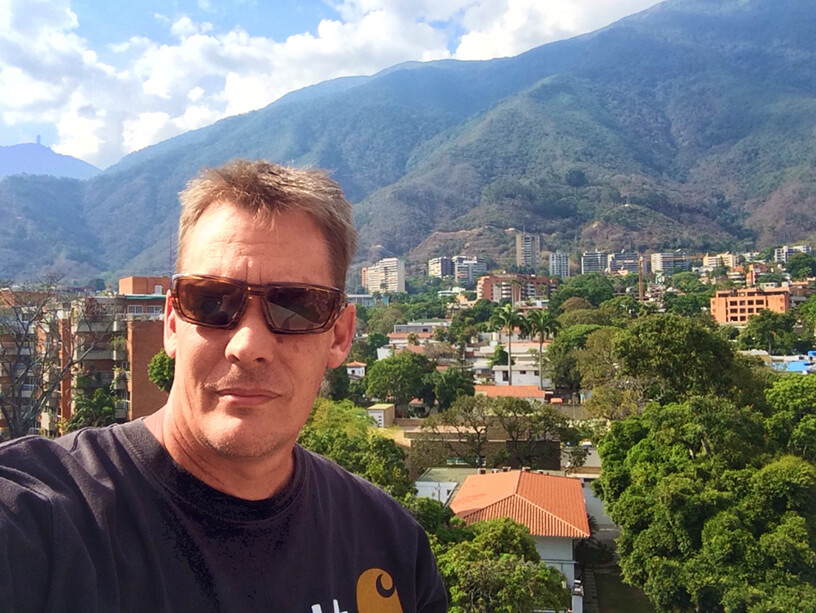
Do you have questions about travel insurance? See our FAQs to find out more.
Crime in Caracas
Caracas itself is a large, sprawling metropolis with a population of more than 5.4 million inhabitants. But apart from the ‘idyllic’ Latin capital of Venezuela, the city itself is also known as the kidnap capital of the world.
In 2014, there were over 24,000 homicides in Venezuela. Caracas authorities estimate an average of 24 homicides and up to 40-50 extortion kidnappings occur in a single day.
Well, these are certainly sobering statistics!
I’m certainly no stranger to dangerous places – encountering many less than desirable places in my line of work.
But this was different.
Sending me to the second most violent city in the world was, if I am perfectly honest, a bit unnerving.
Arriving in the city
Arriving at the airport I cleared customs and immigration with little more than a cursory glance at my passport and the official’s disbelief that I would travel this far for a mere 24 hours before leaving again. This is a common reaction in my job.
Head down, I made my way through the throngs of touts in the arrivals hall offering taxis and black market currency exchange offers, which are generally negotiated in the gent’s toilets away from the prying eyes of any officials.
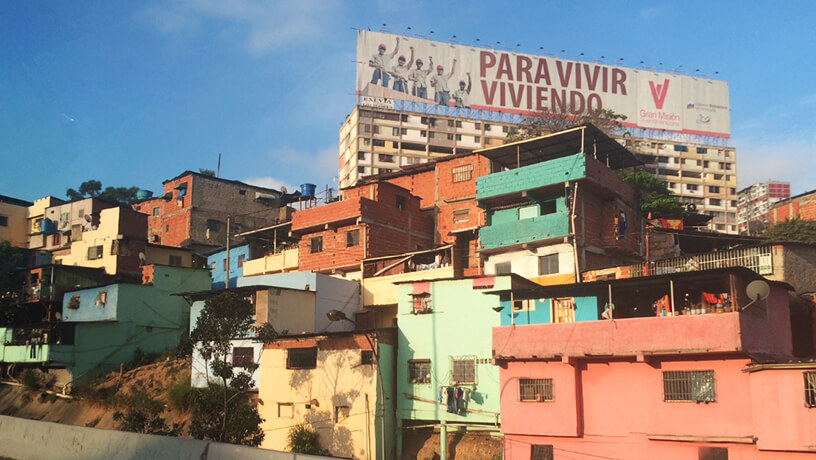
Safety is an important element to consider when travelling abroad. Read these security tips for solo travel.
Getting from the airport
I met my local contact in the arrivals hall. The US government insists on all government employees travelling to Caracas, to travel from the Airport in armoured vehicles. The plan for me was so cunning you could “pin a tail on it and call it a weasel”.
My contact was a local employed by our agent in Caracas. He and his wife came to pick me up to drive me to my hotel.
We made our way across the open-air parking lot to a slightly less armoured car - an early 1980’s beat up 2 door Nissan Micra. Depositing myself in the back seat with my knees near my ears, we set off towards the city.
Travelling incognito was far more sensible.
First impressions of Caracas
Driving along the notorious 30km stretch of highway to the city, the first thing that strikes you is the ramshackle Barrios (slums), which are built in the most precarious positions on the hillsides and pretty much any available space that can be found.
There are no building codes enforced here!
If you have ever played Modern Warfare on your PS3 / PC, then you will know of the Brazilian Favelas. If not, then the picture above aptly displays these wonders of architecture.
But don’t be fooled by the colourful facades. This is not a place you want to suddenly find yourself in. If you do - then do not expect to come out with your money, valuables and most likely, your life.
Arriving in Altamira, one of the safer and more affluent suburbs of Caracas, I was pleasantly surprised. It’s a relatively quiet, leafy area with buildings reminiscent of suburban Bangkok.
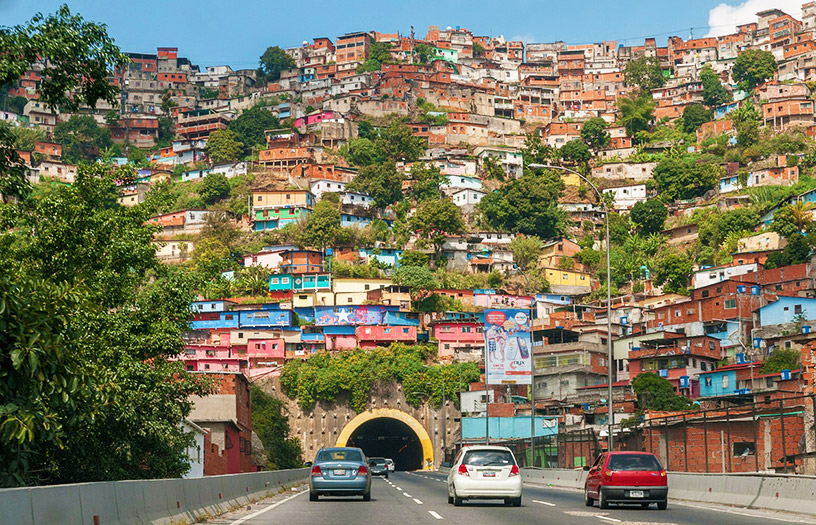
The residential buildings are all about 10-15 stories high, with a patchwork of potted window gardens and the weekly laundry hanging out from windows and balconies to dry. The main difference is that all these places are generally surrounded by 20ft high concrete walls adorned with razor wire.
The exterior of the hotel resembled the papal residence but is built on top of a group of restaurants and shops. This was particularly handy, as I had no intention of leaving the hotel grounds after dark to find somewhere to eat.
In fact, the hotel security guard warned me of going walking anywhere in daylight hours alone, because of the very real risk of being held up at gunpoint or kidnapped.
Suffice to say, even the short trip just 600m away to see my patient was done by taxi. Tipping taxi drivers is the unwritten rule and expected here.
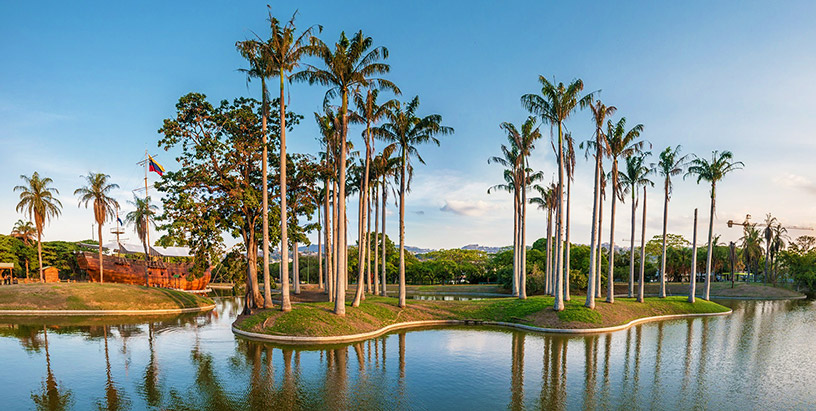
It's not unusual for people to fall victim to scams at hotels. Find out how to avoid them here.
Staying in Caracas
My view from my hotel was incredible.
Altamira is nestled right at the base of the tropical, coastal mountain range separating the city from the Caribbean Sea. The best description I can offer is an immense 9,000ft green tidal wave about to engulf the city.
Even though I was in an affluent area, I soon realized that no-one here drives new cars. This is seen as a sign of wealth and a sure-fire way to get ambushed by crime gangs.
In fact, some cars I saw gave me the impression that they belonged in a spare parts car wreckers rather than on the road.
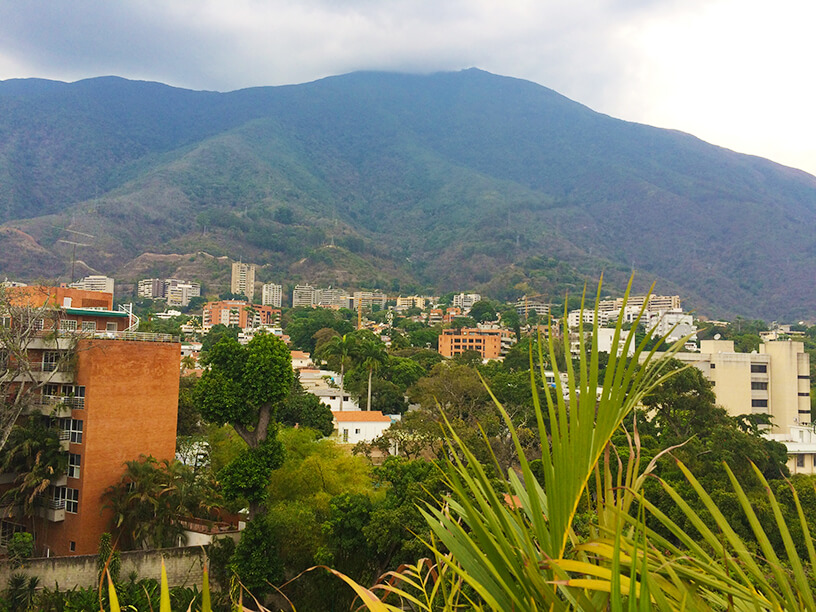
It's important to stay healthy while travelling. Here's how to look after yourself while on holidays.
Life in Caracas
The locals themselves though, speak enthusiastically and with great pride of their cultural heritage and their city. At the same time, they also acknowledge the dangers they face in everyday life.
It is common for families to set aside ransom money in the event a family member is kidnapped. The extortionists only make one phone call. It’s hard to imagine living under such conditions – but alas, this is just a way of life in Venezuela.
Eating out is a popular pastime with plenty of multicultural cuisines to be enjoyed. Small street vendors, cafes and fine dining abound. I can recommend the traditional ‘Arepa’ - A fired corn pancake filled with cuts of cow meat flavoured with spices and peppers. As they say, when in Rome.... An average meal can be had for around $10.
With time being short (and a healthy dose of wanting to remain alive), I was unable to visit any of the local attractions such as national museums / galleries, or historical centres.
Alas, my pick up time to depart was at 4am the next morning – early to bed it was. As promised, my trusty driver was right on cue.
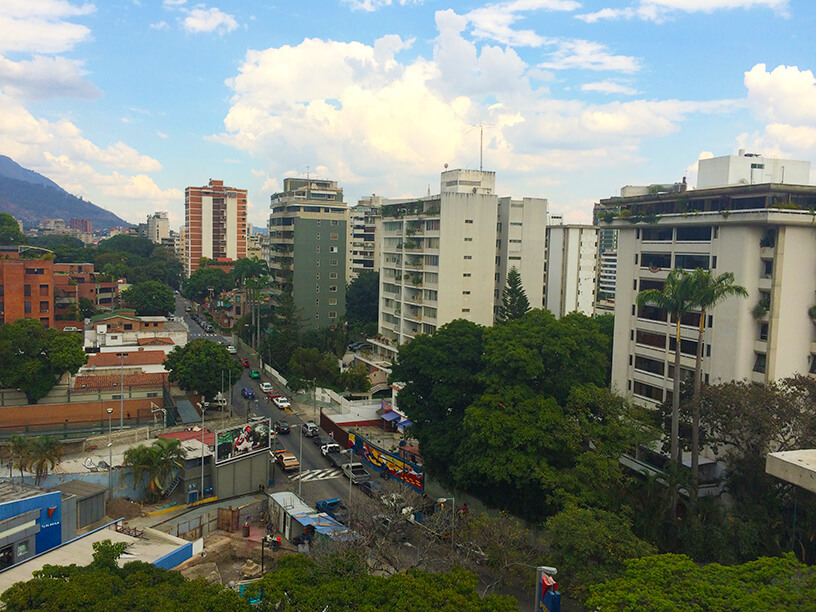
Get a FREE quote for travel insurance to protect your trip.
Repatriation mission to get home
We ran the gauntlet of darkness down the street to pick-up my patient (not before having to negotiate 2 security checkpoints to gain access to the property).
We packed everything into the car and set off back to the airport.
Back along the highway in the dark – something that every travel tip advises NOT to do. We drove like a medium-paced getaway car.
The driver took us straight past stop signs and through red lights at intersections to avoid any potential car-jacking attempts. The marked police car beside us did the same.
Once checked-in for the flight back, I went to exchange my Bolivar’s back to US currency and received a most incredulous blank stare from the foreign exchange booth guy.
Exchanging currency here is a one-way street. You cannot change Bolivars back to another currency when you leave. So, I did what any good traveller would do - I bought 20 bars of Duty-Free Venezuelan chocolate.
Would I return? .... I don’t know, but I can now tick Venezuela off my bucket list.
In case you were wondering... Yes, my patient and I made it home safe and sound.
Michael Simms is a Registered Nurse who combines his passion for helping people with his love of travel as part of his role at Cover-More. From time to time you'll find Michael jetting off anywhere in the world to rescue a customer of ours and bring them home safely. This self-confessed travel junkie considers his job to be the best in the world.
The views, opinions and positions expressed by the author and those providing comments are theirs alone, and are meant as travel inspiration only. They do not reflect the opinions of Cover-More Insurance. You should always read the Policy Wording available from your travel insurance provider to understand the limits, exclusions and conditions of your policy and to ensure any activities you undertake are covered by your policy.